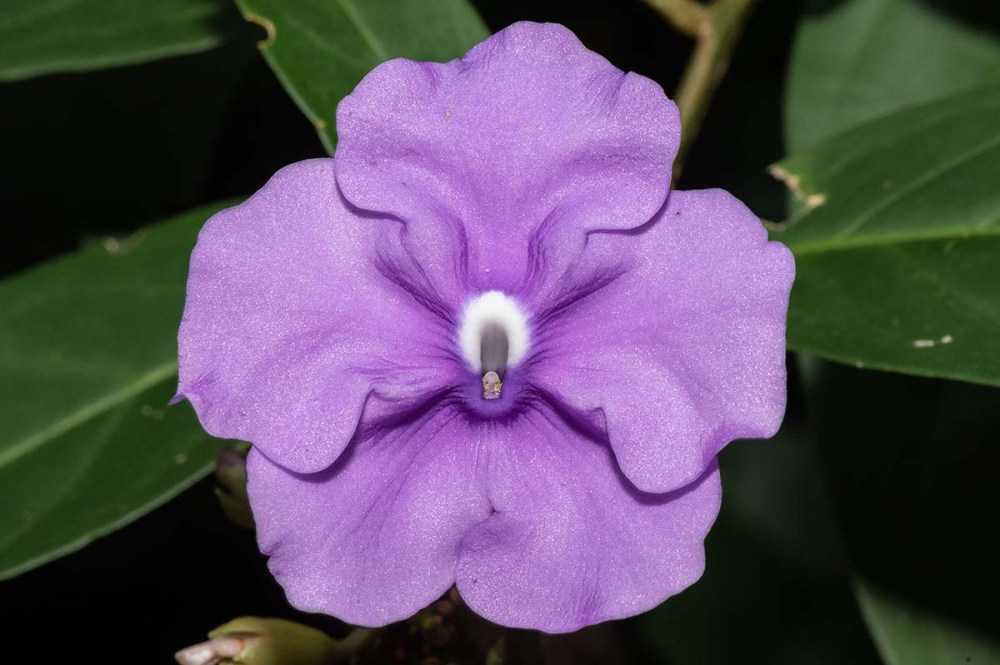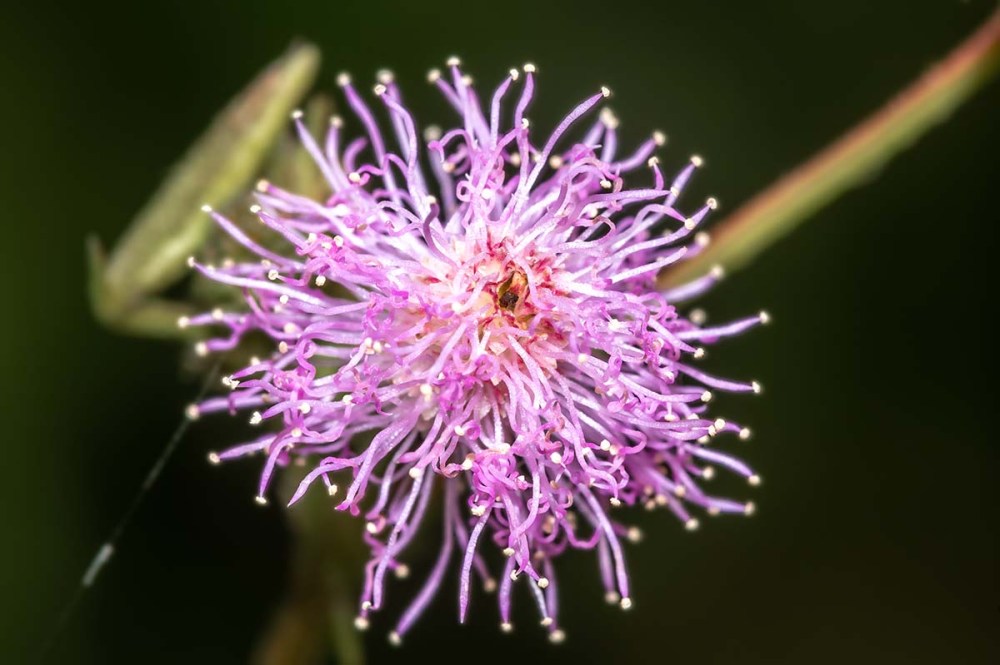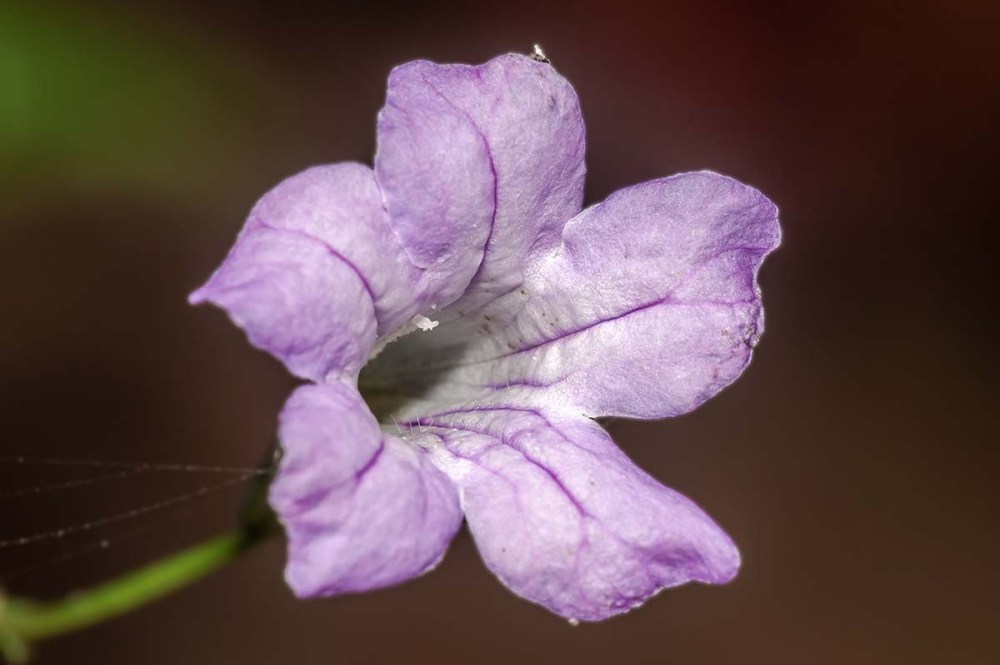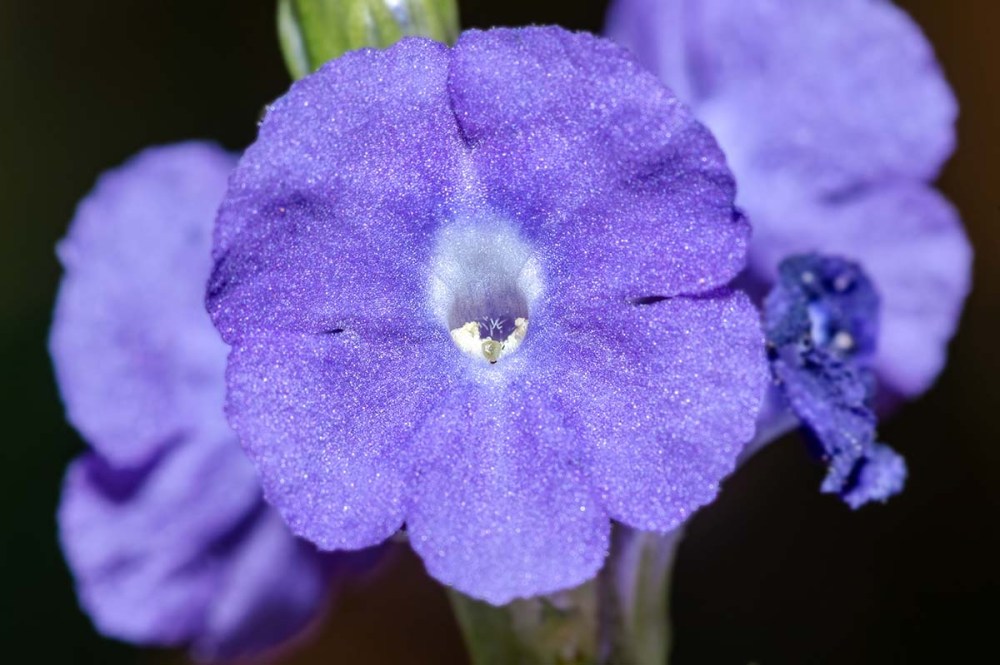Day by day the rains lessen. Day by day the sun is breaking through a little more, warming up the ground and consequently the air. Evaporation causes the relative humidity to rise. We are almost there, almost into the dry season. It won’t be long before we start to lament the lack of precipitation but let us at least enjoy the first few dry weeks without complaint. There were five days with almost no rain but it was a false start to the dry season, the rain returned, not heavily, but rather grey days with drizzle.
Coloring Time
The increasing temperatures and decreasing precipitation seem to have stimulated flowering in at least some of the plants. There is one small bush that has produced a display of flowers. It has the captivating name of Yesterday, Today and Tomorrow, (Brunfelsia grandiflora). The name refers to the rapid color change in the flowers. When the bud bursts and the new flower blooms, it is a light lilac color. By the following day the hue will have started to fade and then several days later the now white flower falls from the bush.

Yesterday, Today, Tomorrow, (Brunfelsia grandifolia). Flower
Yesterday, Today and Tomorrow is native to the northern part of South America. It belongs in the nightshade family; Solanaceae. It is planted in many Costa Rican gardens to provide a showy display of changing colors. The flowers are also fragrant and attract bees.
Color Sensitive
Many people are familiar with the Sensitive Plant, (Mimosa pudica). It has the entertaining habit of closing its leaves on contact or as night falls. It is a very low growing plant found sprawling along the edges of paths and roads. It is a native to Costa Rica but has now been naturalized in many tropical areas around the world.
The short-lived flowers are a deep lilac fused with red and are pollinated by bees. But the most intriguing thing about the Sensitive Plant is the ability of the leaves to fold up. At night the plant exhibits a behavior known as nyctinastic movement. As the sun sets are darkness envelopes the forest, the leaves of the Sensitive Plant fold and close together. As the sun rises, they open up again.

Sensitive Plant, (Mimosa pudica). Flower
But more familiarly, if touched the leaves immediately close, a phenomenon known as seisonastic movement. The means by which this happens is fascinating. Contact with the leaf causes an electronic impulse to be passed along the leaf which in turn stimulates the transfer of potassium out of the cells at the base of the leaf which then lose water and become flaccid and collapse. This is an energy expensive reaction from the plant to external contact and therefore must convey some benefit. As of now, we are not entirely sure what this benefit is. It could well be that it makes the leaf less appealing to herbivores or when it rains reduces potential damage by being smashed against the ground. Whatever the reason it certainly compels people to tap it and watch the response.
The Sensitive Plant is also an important nitrogen fixer. It releases a compound from its roots that inhibit certain pathogenic fungi growing near its roots. The roots have nodules which contain nitrogen fixing bacteria. The bacteria do something the plant cannot, they take atmospheric nitrogen and convert it into a form usable by the plant. Plants require nitrogen for many aspects of their lives, not the least of which being the growth of tissue. Up to 60% of the Sensitive Plant’s nitrogen requirement is provided by the root-dwelling bacteria which allow it to thrive in areas where the soils are nitrogen deficient.
Purple Rain: Lavender and Lilac Light Up The Forest
There are several other small herbaceous plants that can be seen on the forest floor or around the gardens that have lavender or purple coloration. Here and there an isolated small purple bell-shaped flower can be found. The small bloom stands out in contrast to the deep green of the surrounding vegetation. This is Monopyle sp of the family: Gesneriaceae. Growing in the same localities but with a larger, shrubbier aspect is the Portaweed, (Staphytarpheta frantzii), which is in the family: Verbenaceae. The butterflies, particularly skippers, seem to be attracted to the Portaweed flowers. Both of these plants are native to Costa Rica.

Monopyle sp. Flower.

Portaweed, (Stachytapheta frantzii). Flower
Whereas both of the above plants are low growing and herbaceous, there is a tree that produces a spectacular display of flowers in the canopy, so much so that they are planted in Costa Rican town streets for their attractive blaze of color. These are the Jacarandas. When the flowers finish blooming they fall to the ground and cover the forest floor in a carpet of purple. A native Jacaranda in the forests of the Osa Peninsula is Jacaranda copaia, family: Bignoniaceae. When it does flower, the canopy is enriched with its pigmented presence. Afterwards, it provides a brief but colorful change to the normally dull red mud of the forest trails.

Jacaranda, (Jacaranda copeia). Flower.
Too Blue To Be True
Flowers tend to divide into 3 distinct classes with regard to color; red, orange and yellow or pink, lilac and lavender or white, cream and green. The different colors favor different types of pollinators. Red, orange and yellow attract birds, namely hummingbirds, pink, lilac and lavender are visited by insects, particularly bees, finally whites, creams and greens normally have nocturnal pollinators such as bats and hawkmoths.
The different colors are produced by different pigments. Plant pigments fall into four categories. Chlorophyll is a name most people will be familiar with, certainly to some level. It is responsible for the vitally important green coloration of plants. Carotenoids give rich reds, oranges and yellows. Flavonoids give the deep red/purples as well as blacks, browns and white. Betalains produce red/violet and orange/red. Things are not as simple as outlined above as there are many overlapping shades and hues.
The one color noticeable by its absence is blue. Blue is not a common color in plants or animals. Less than 10% of the named 280,000 species of flowering plants are blue in color. Plants that have blue flowers have done so with a little bit of manipulative trickery because there is no true blue pigment found in plants. Anthocyanins are a flavonoid pigment responsible for many red flowers and fruits. By mixing some of the pigments and altering the pH a blue color is produced. This produces some spectacular blooms such as Bluebells, Delphiniums and Morning Glory.
Leave a comment